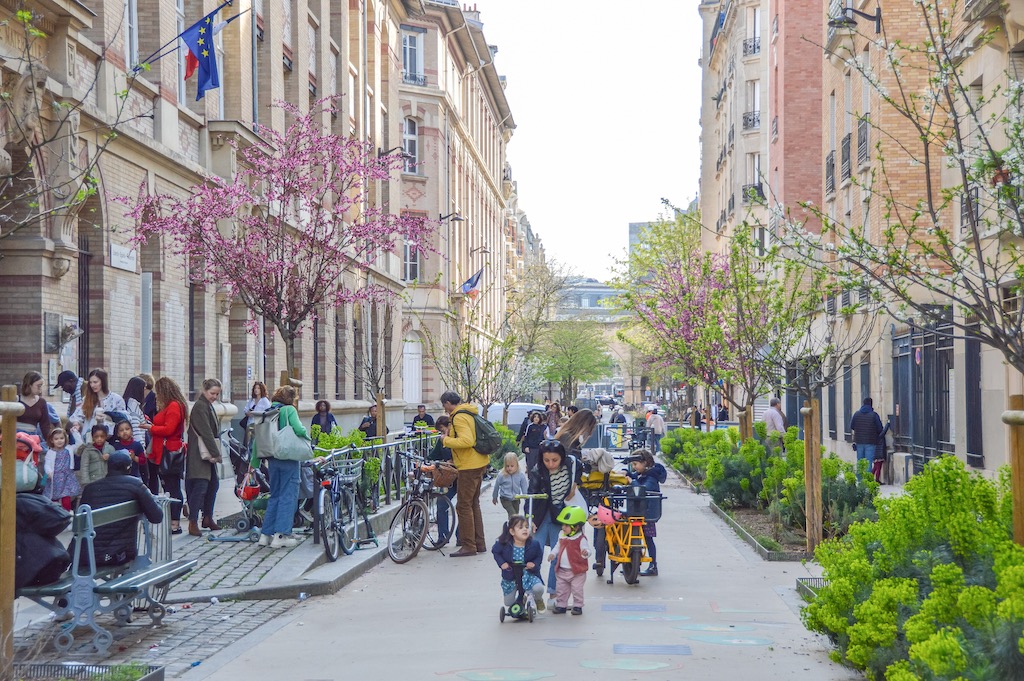Autumn Gear Guide
Find inspiration in our Gear Guide that will keep you out on your bike through wind or rain.
Download NowThe concept of a 15-minute city is gaining popularity as urban planners and policymakers seek to create more livable, sustainable cities. One key element of this vision is promoting cycling as a means of transportation. By making it easy and safe to bike around town, cities can reduce traffic congestion, improve air quality, and enhance […]
The concept of a 15-minute city is gaining popularity as urban planners and policymakers seek to create more livable, sustainable cities. One key element of this vision is promoting cycling as a means of transportation. By making it easy and safe to bike around town, cities can reduce traffic congestion, improve air quality, and enhance the quality of life for residents.
The origins of the 15-minute city can be traced back to the work of renowned urban planner and architect Carlos Moreno. In 2016, Moreno introduced the concept as a way to reimagine urban living and tackle the negative impacts of urban sprawl. The idea gained further attention during the COVID-19 pandemic, as the importance of local amenities and accessible services became increasingly evident.
Several cities around the world have embraced the 15-minute city concept and are working towards implementing its principles. Paris, France, under the leadership of Mayor Anne Hidalgo, has been at the forefront of this movement, aiming to transform the city into a collection of interconnected neighborhoods where residents can find everything they need within a short distance. Paris has achieved nothing short of revolutionary change, with the bicycle firmly at the centre.
There is no question that bicycles can not only help but are essential to create a 15-minute city. Here’s why.
A 15-minute city is a concept where everything a person needs for their daily life is within a 15-minute walk or bike ride from their home. This includes access to basic services such as grocery stores, schools, healthcare facilities, and public transportation.
The idea is to create more livable, sustainable cities where people can easily access the resources they need without relying on cars or other forms of transportation. By promoting cycling as a means of transportation, cities can reduce traffic congestion, improve air quality, and enhance the quality of life for residents.

Paris school street (Dutch Cycling Embassy)
To create a 15-minute city with bicycles at the center, it’s important to identify the key destinations and services within your city. This includes grocery stores, schools, healthcare facilities, public transportation hubs, and other important services.
Once you have identified these key destinations, you can work to create safe and accessible bike routes that connect them. This may involve adding bike lanes, reducing speed limits, and creating bike-friendly infrastructure such as bike racks and repair stations.
By prioritizing bicycles as a means of transportation, you can create a more livable and sustainable city for all residents.
One of the key components of building a 15-minute city with bicycles at the center is developing a network of safe and accessible bike lanes. This means creating dedicated bike lanes that are separated from vehicle traffic, as well as ensuring that bike lanes are well-maintained and clearly marked.
It’s also important to connect bike lanes to key destinations and services, such as schools, grocery stores, and public transportation hubs. By prioritizing bike infrastructure, you can make it easier and safer for residents to choose bicycles as their primary mode of transportation.

Bike Share Toronto
In addition to building bike infrastructure, cities can also encourage cycling by implementing bike-sharing programs and other incentives.
Bike-sharing programs allow residents to rent bicycles for short periods of time, making it easier for them to use bicycles for short trips or to try cycling without committing to purchasing a bike. Other incentives could include offering tax breaks for bike commuters, providing secure bike parking, and offering discounts or rewards for cycling to local businesses.
By making cycling more accessible and rewarding, cities can encourage more residents to choose bicycles as their primary mode of transportation.
Building a 15-minute city with bicycles at the center requires more than just infrastructure and incentives. It also requires a shift in culture towards sustainable transportation. Cities can engage with the community by hosting events like bike rides, workshops on bike maintenance and safety, and public forums to gather feedback and ideas from residents. By involving the community in the planning and promotion of cycling, cities can create a sense of ownership and pride in their sustainable transportation options.
Find inspiration in our Gear Guide that will keep you out on your bike through wind or rain.
Download Now
As an older cyclist (81), I especially appreciate the growing number of bike lanes in my community, particularly those that are physically separated from vehicular traffic.
Comments are closed.